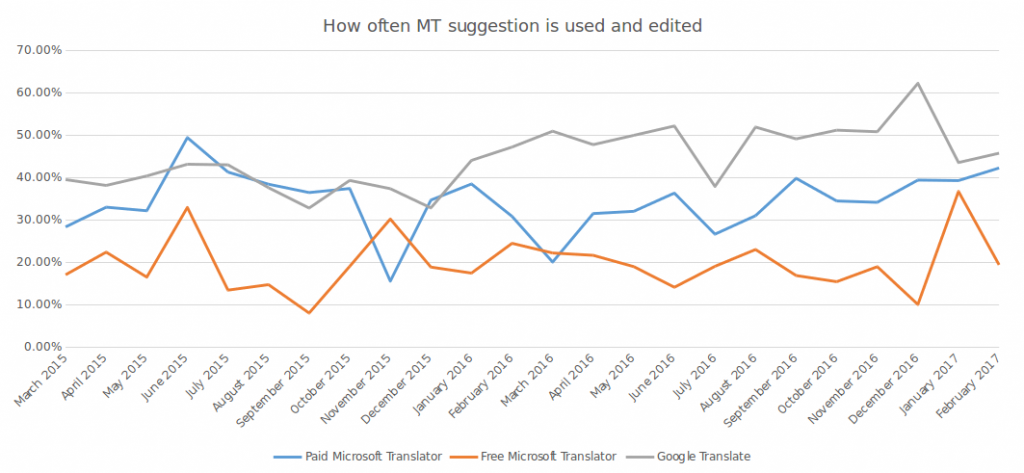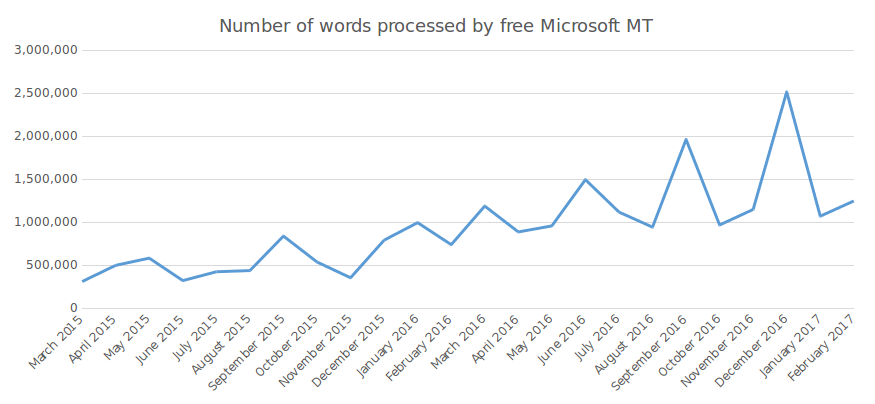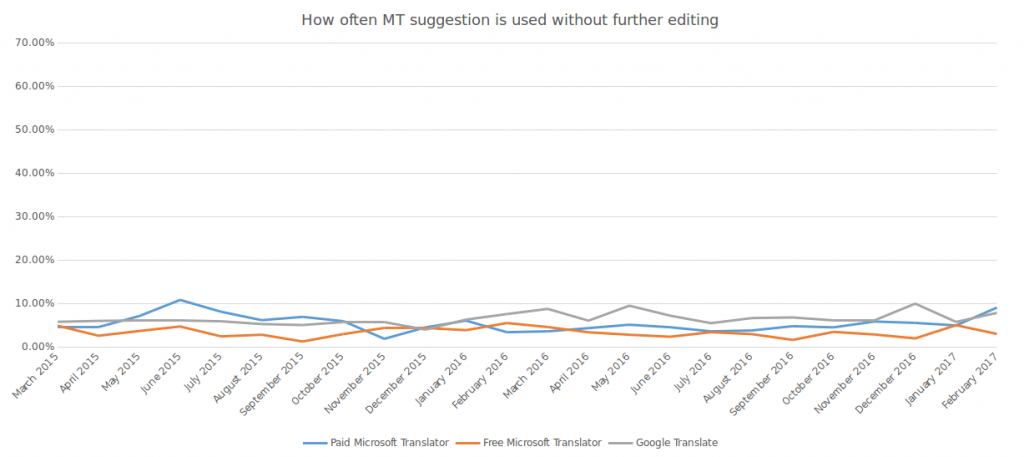
Blog
Machine Translation Report
What is the optimal MT Engine for you? Find out in the latest MT Report by Memsource.

Memsource was a proud sponsor of the annual Conference of the European Association for Machine Translation (EAMT) on May 28-31, 2017 in Prague. Thanks to the mix of participants from both academia and translation industry, the conference sparked several interesting discussions, including the use of machine translation (MT) in professional translation.
As a sponsor and participant, Memsource presented a poster at the event which analyzed the use of MT in Memsource Cloud. Here’s what we found.
Top machine translation engines used in Memsource
The three most frequently used engines in Memsource Cloud are Microsoft Translator (paid version), Google Translate, and Microsoft Translator (free version). The following charts show the number of words processed by each engine. The use of the paid Microsoft Translator reached 35 million segments per month at one point, which is quite a prominent difference compared to Google Translate (maximum was 5 million segments) and the free edition of Microsoft Translator (2.5 million).
How often is Machine Translation used with and without editing?
One aspect that the absolute numbers don’t show is how frequently linguists choose the MT output - either to be used as-is or with post-editing. We analyzed this data as well and have summarized it in the following charts. Please note that only jobs processed by our post-editing analysis are included.
 What does this say about the use of MT in translations?
What does this say about the use of MT in translations?
Looking at the first plot, it is apparent that MT can still be used without changes, but only in rare situations - generally, less than 10% of translations will be left unedited. It will be interesting to see how this evolves as neural MT is gradually introduced in major MT engines and more language pairs are added.
On the other hand, the second plot clearly shows how useful MT is in professional translation today – a large percentage of translations are in fact created by post-editing MT outputs.
Combined together, the data shows an encouraging picture: linguists are completely indispensable in the process of translation as MT almost always requires revisions and post-editing. At the same time, we can also see that MT often provides a useful starting point and that the ever-evolving language technology indeed helps make translators’ work easier and more efficient.
About the authors
Aleš Tamchyna is an engineer at Memsource, working on optimizing the translation process. He completed his Ph.D. at Charles University, with a specific research focus on machine translation.
Filip Šanca is the Academic Account Manager at Memsource, working with translation professors and students participating in the Academic Program around the world. He is currently working on his master’s degree in Serbian philology at Charles University.






